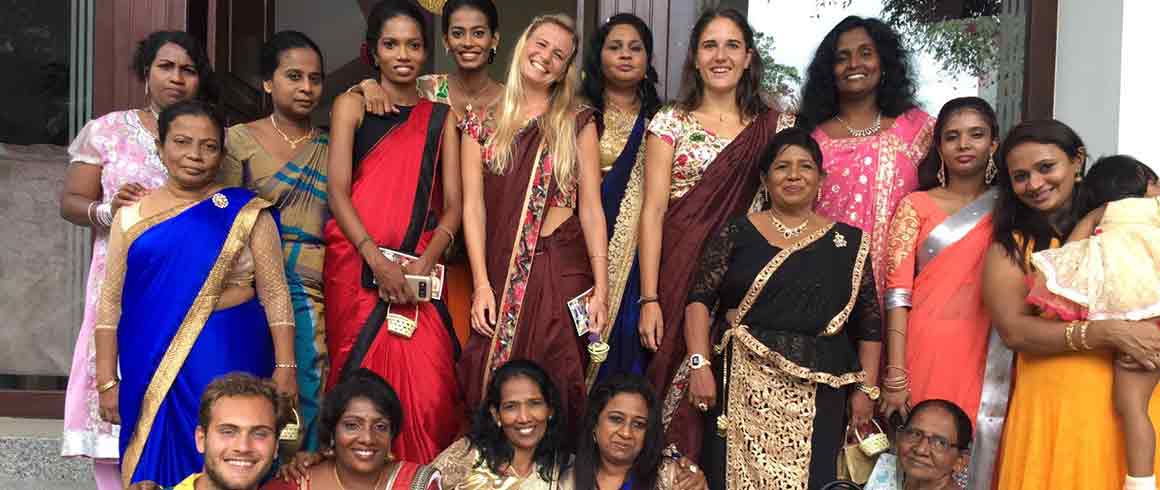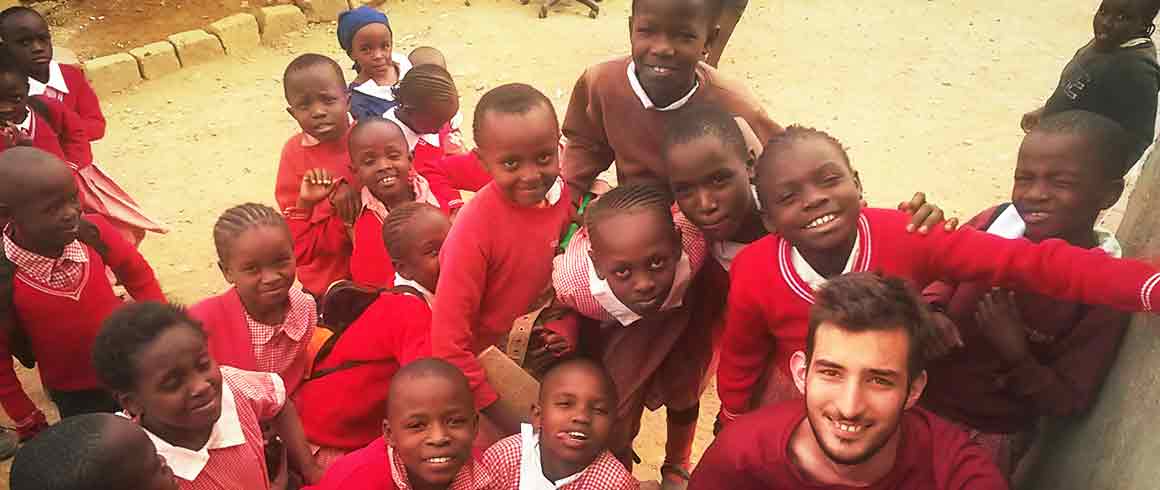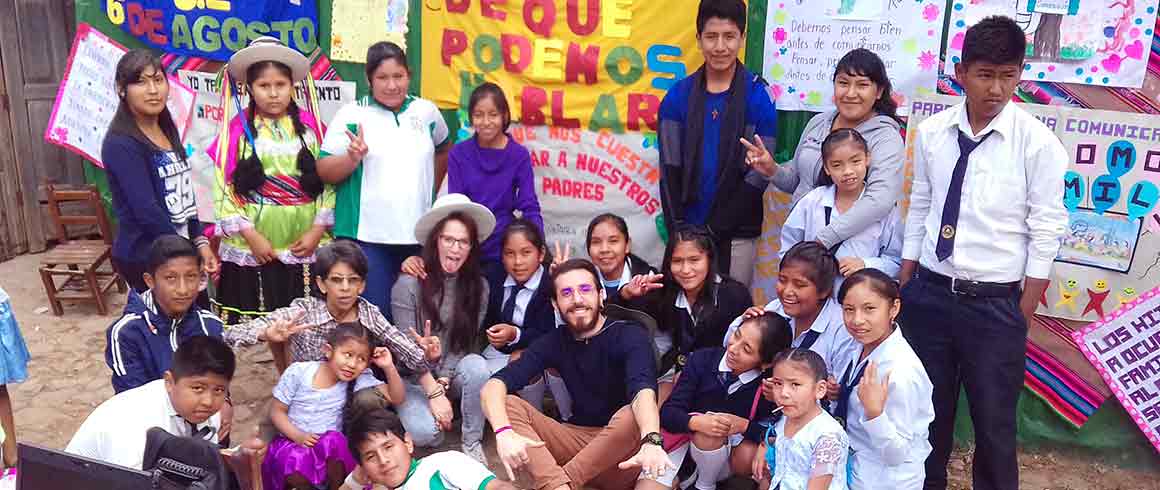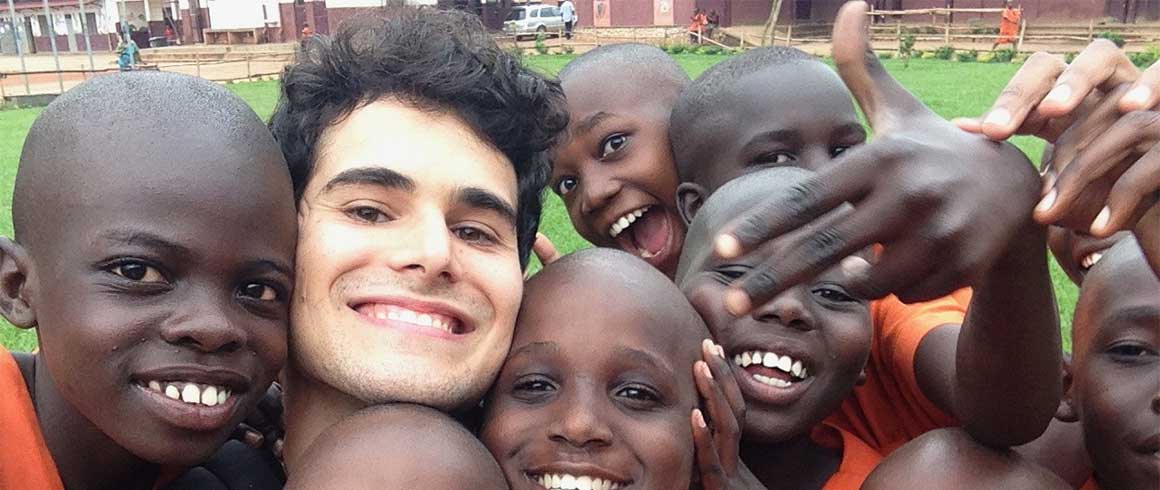di Maria Elisa Beretta, Lisa Mazzon e Tommaso Zonta *
Vivere una vita dignitosa fondata sulla giustizia, l’uguaglianza, la pace, e la libertà è solo una delle lezioni di vita che ci portiamo a casa dal nostro Charity Work Program in Sri Lanka.
Durante le prime tre settimane, abbiamo partecipato al progetto di volontariato dell’associazione non-profit e apolitica Shanti Community Animation Movement, in uno dei quartieri più poveri della capitale Colombo, Dehiwala.
L’organizzazione è stata fondata nel 1977 dal missionario gesuita padre Michael Catalano, originario di Napoli, e opera nelle comunità più povere e marginalizzate della città, attraverso programmi di capacity building, skills training e formazione rivolti a bambini e adulti, con particolare attenzione alle donne, alle vittime di guerra e di disastri naturali.
Oggi l’organizzazione è gestita da Sujeewa, che coordina tutte le attività promosse dall’ente, insieme al prete gesuita padre Ranjiit, entrambi molto ospitali e carichi di esperienza di solidarietà internazionale.
Siamo stati coinvolti nei diversi progetti per i bambini dei quattro asili gestititi dall’organizzazione. Il lavoro svolto dagli asili/preschools di Shanti è principalmente impostato secondo la metodologia Montessori “play and learn” (gioca e impara) e cerca quindi di stimolare le capacità artistiche dei bambini iscritti. La lingua principale in cui i bambini vengo istruiti è quella cingalese, ma considerata l’importanza che riveste la minoranza di lingua e cultura tamil che vive nel Paese, le maestre insegnano anche diversi vocaboli, tra cui ovviamente l’alfabeto e numeri, in tamil e anche in lingua inglese.
Inoltre, abbiamo avuto l’opportunità di tenere lezioni di lingua inglese alle maestre degli asili e di visitare le famiglie della città assistite dallo staff di Shanti, che vivono in condizioni di estrema povertà.
Nella quarta settimana abbiamo lavorato alla Mount Calvary High School di Galle, al sud del Paese, gestita da padri gesuiti: una scuola bilingue. Siamo stati coinvolti nelle lezioni in lingua inglese della scuola, in particolare nelle classi da grade 3 a grade 7. In aggiunta, gli studenti delle diverse classi hanno avuto l’opportunità di assistere a una presentazione sull’Italia e la cultura italiana, organizzata e gestita interamente in lingua inglese da noi volontari.
Di questa settimana ci è rimasta impressa la risposta quasi unanime da parte dei bambini alla domanda “cosa vuoi fare da grande?”. Altro che astronauta, attore, principessa o cuoco. No, i bambini della Mount Calvary pensano più in grande. Pilota, dottore e ingegnere sono le (quasi) uniche risposte dei bambini, indipendentemente dall’età. Parlando con i gesuiti di queste risposte, abbiamo capito il motivo: quelle che hanno indicato solo le uniche professioni che permettono un avanzamento nello strato sociale del Paese, ancora caratterizzato da un sistema di caste.
Al di fuori dell’attività legata al volontariato, questa esperienza è stata unica dal punto di vista culturale. Oltre alle escursioni attorno allo Sri Lanka, tra cui le città di Kendy e Trincomalee e il Parco Nazionale di Sigiriya, abbiamo avuto l’opportunità di vivere la cultura cingalese di tutti i giorni. Abbiamo imparato come sia consono mangiare con le mani, togliersi le scarpe nei luoghi di culto per non renderli impuri, accogliere animali randagi perché considerati sacri secondo la religione predominante, il Buddismo. Abbiamo anche assistito a un matrimonio celebrato secondo rito buddista.
Secondo la tradizione, l’elemento fondamentale è rappresentato dal “poruwa”, o altare matrimoniale: un’elegante struttura elevata da terra, generalmente di legno, composta da un tetto e quattro colonne. La costruzione dell’altare inizia a partire dal momento del fidanzamento dei due sposi e viene portato nel luogo dove si celebrerà il rito una volta terminato. Vengono inoltre sparse noci di cocco, tipiche dello Sri Lanka, col fine di simboleggiare la prosperità del matrimonio e della vita.
Successivamente, delle foglie di betulla sono date dal sacerdote agli sposi in simbolo di purezza. Vengono poi posti quattro cocchi freschi attorno all’altare per significare le quattro nobili verità del buddismo e per far sì che i due sposi siano a conoscenza delle suddette verità: sofferenza, causa della sofferenza, fine della sofferenza e la via scelta per porre fine alla sofferenza stessa. Finalmente, monete vengono portate sull’altare, simboleggiando che la coppia non vivrà la propria vita ricercando la ricchezza. La sposa e lo sposo entrano poi rispettivamente da destra e sinistra, accompagnati dal canto degli ashtaka, coloro che conoscono a fondo la cultura e la bellezza dello Sri Lanka e sono considerati saggi.
Partecipare a questo matrimonio, così come entrare nella vita di tutti i giorni di persone culturalmente diverse da noi, cercando di dare il nostro semplice contributo è stato ciò che più di tutto ci ha permesso di crescere come persone. È essenziale riuscire a comprendere le diverse culture che ci circondano e accettarle proprio perché diverse. Siamo convinti che il motto delle Nazioni Unite “unity within diversity” (uniti nelle diversità) non sia solo un insieme di parole, ma un vero e proprio stile di vita che dimostra come la cooperazione internazionale sia alla base della globalizzazione che stiamo vivendo ogni giorno in tutti gli angoli del pianeta.
Questa esperienza ha regalato a noi, cittadini del mondo occidentale, delle vere e proprie lezioni di vita: ci ha permesso di capire cosa significa condurre una vita lontana dal lusso e dai comfort di tutti i giorni, vivere con semplicità e cogliere il meglio dalle occasioni che ci si presentano, sempre rispettando le tradizioni e il luogo da cui proveniamo.
* Maria Elisa Beretta, 24 anni, di Crema, laurea triennale in Lettere moderne, facoltà di Lettere e filosofia; Lisa Mazzon, 24 anni, di Como, laurea magistrale in Banking and Finance, facoltò di Scienze bancarie, finanziarie e assicurative; Tommaso Zonta, 21 anni, di Bassano del Grappa (Vi), laureando alla triennale in Scienze politiche e delle relazioni internazionali, facoltà di Scienze politiche e sociali. Tutti nel campus di Milano
http://milano.unicatt.it/facolta/lettere-e-filosofia
http://milano.unicatt.it/facolta/scienze-bancarie-finanziarie-e-assicurative
http://milano.unicatt.it/facolta/scienzepolitichesociali
Per il testo in inglese clicca qui a fianco
Continua a leggereLiving a dignified life based on justice, equality, peace and freedom is one of the life lessons that we bring home with us from this experience. Our Charity Work Program, organized by the Centro di Ateneo per la Solidarietà Internazionale of the Università Cattolica, took place in Sri Lanka for a period of 4 weeks.
During the first 3 weeks, the volunteering project was carried out in the non-profit and non-political association named Shanti Community Animation Movement, in Colombo’s neighborhood Dehiwala, which cooperates with the poorest families living in the capital city. The organization was founded by Italian Jesuit priest Father Michael Catalano in 1977 and works within the poorest and marginalized communities of the city, trough capacity building programs, skills training and formation ones addressed to both children and adults, with special attention to women, war and natural disasters victims. Nowadays, the organization is run by Sujeewa, who coordinates every Shanti’s activity, together with Jesuit Father Ranjiit, who took the place of Father Catalano after his death. Both of them were very nice to us and it was clear that they had years of experience within international solidarity. As a matter of fact, Sujeewa told us about the times in which she used to accompany Father Catalano on his travels to Europe and how perceived Western world’s culture. On the other side, Father Ranjiit used to tell us anecdotes about his mission abroad. During his life, he was a missioner in both Pakistan and Ghana and had the possibility to live these two realities firsthand.
The activity we were assigned to was to take part in the different project for children carried out by the four preschools run by Shanti. These kindergartens operate according to the Montessori methodology “play and learn” which stimulates children’s artistic skills. Primarily, children are taught in Sinhalese, but considering the importance that the Tamil minority which lives in the country has, teachers also teach the children Tamil vocabulary and English ones as well.
Moreover, we had the possibility to give English classes to preschool teachers and to visit the families assisted by the staff of Shanti, which live in condition of extreme poverty.
During the last week, we assisted the Mount Calvary High School located in the Southern city of Galle, which is run by Jesuit fathers and uses a bilingual method teaching more than half of the subjects in English. The activity we were involved in was to teach English to the children from grade 3 to grade 7. What’s more, the students of the school had the chance to assist to a presentation about Italy and Italian culture run by us in English. The fact that impressed us the most was the answer we were given by the children after having asked them what they would like to become in the future. Generally, children answer in all ways: astronauts, actors, princesses or chefs, but Mount Calvary’s students have bigger ideas. Pilots, doctors and engineers are the (almost) only answers children gave us, regardless their age. Interested by these answers, once classes were over, we referred the fathers who were hosting us our surprise in the answers given by the children. They told us that in a private school environment as the Mount Calvary’s one, which is more stimulating and ambitious, it is normal that students want to become pilots, doctors or engineers, because these are the only jobs which can guarantee ad advancement in the social pyramid of the country, still characterized by a caste system.
Apart from the volunteering activity, this experience was unique from a cultural point of view. We had the chance to visit different places around Sri Lanka, such as Kendy, Trincomalee and Sigiriya National Park. In addition, we understood Sinhalese everyday life: it is normal for Sri Lankan people to eat with the hands, to take off their shoes in holy places and to host abandoned animals which are sacred according to the predominant religion, Buddhism. But what really involved us the most was taking part in a Buddhist wedding. This was an experience to see both how this ritual works in a foreign country and in a different religion.
According to tradition, the main element is characterized by the poruwa or the marriage altar, which is an elegantly adorned structure that is elevated from the ground. It is generally made of wood with four pillars and has a roof. It is decorated with flowers and traditional motifs. The assembling of the poruwa is commenced at an auspicious time. Pots filled with coconut flowers are placed at its corners. The coconut fronds in the pots signify prosperity. Betel leaves are kept at the four corners together with clay lamps and a few coin offerings. The betel leaves act as a natural cleanser while clay lamps are lit to seek the blessings of the deities & the triple gem. Fresh and healthy coconuts are kept signifying the four noble truths of Buddhism: suffering, the cause of suffering, ending suffering and the path taken to end suffering. This is to teach the new couple the noble truths. Moreover, coins are placed on the poruwa to indicate that the couple will not focus their lives on seeking wealth. At the auspicious time, the bride will step on the poruwa from the left while the groom steps on it from the right. The traditions and rituals of the ceremony are performed by the Ashtaka, laymen who are well versed in the customs and traditions that epitomize Sri Lankan culture and heritage and are generally considered as a symbol of wisdom.
Taking part to the wedding, as witnessing the everyday life of such culturally different people, and trying to contribute trough the activities assigned to us was what gave us the chance to grow as people. We believe it is essential to understand the different cultures who surround us and to accept them. We are of the onion that the not only is United Nations’ motto “unity within diversity” a sentence, but it is a real lifestyle which shows how international cooperation represents the roots of the globalization that we are experiencing every day all around the world. What’s more, as citizens of the Western world, this experience gave us real and undeniable life lessons: we were taught how to conduct a life far from comforts and luxuries, how to live in simplicity and how to take advantage of the occasions life gives us at its fullest, always bearing in mind out traditions and where we come from.





